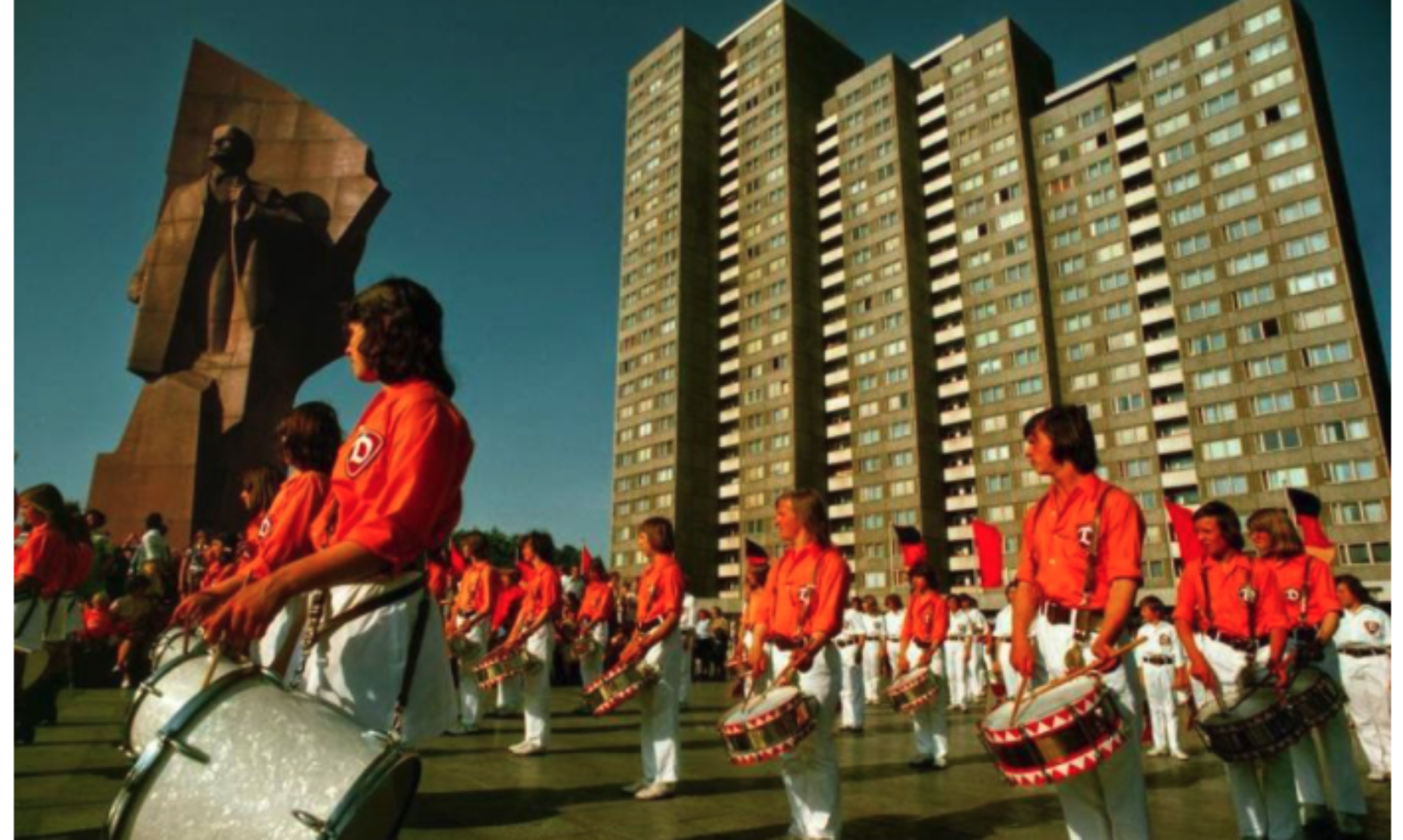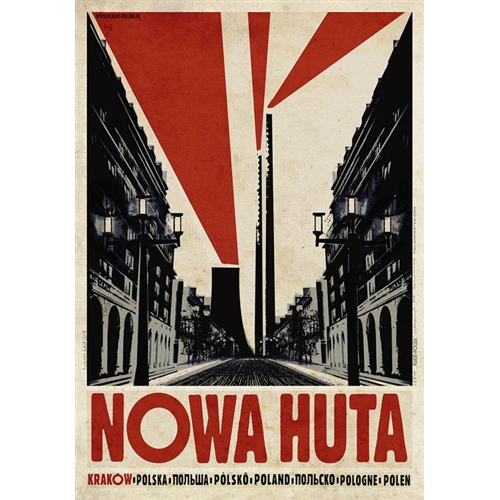Background
After World War II the Soviets were in control of Poland. Poland had been devastated during the war so the new communist government there came up with a three-year plan to rebuild Poland. Stalin wanted the country to increase its steel production as a part of his six-year plan to industrialize Poland. Rather than having multiple small plants; the idea was instead to make a massive steel plant because it would be cheaper and more effective. The plant would be called the Vladimir Lenin Steelworks and would be built 5 miles east of the city of Krakow and it would be 2.3 square miles. In order to staff a plant that large a city would need to be built next to it for its workers and their families, the city was planned to be 2 square miles and be able to house 100,000 people. Before any work could begin there were villages and farms that were destroyed in order to build the plant. The construction of the City was also planned to be highly publicized and used as propaganda to show off the ideal socialist city and to recruit mostly people from rural areas to move there for work and a better life.
Propaganda
The Soviets devised a massive propaganda campaign in order to recruit workers and also promote to the rest of the Soviet Union as well as the world what the perfect socialist city could look like it was meant to show the greatness, modernity, and improved quality of life communism could provide. The propaganda would tell people they had a chance to improve their life and be a part of history by working on constructing the city or working in the steelworks. Posters were made and were plastered all throughout Poland and songs about the city were also made. The media also played a huge role in promoting Nowa Huta. They reported the rapid construction of the city and they interviewed workers who expressed their patriotism for Poland and the USSR and how proud they were to have the opportunity to work on the project. The propaganda and news reports led many to work on the project for an opportunity at a better life and a sense of patriotic pride.
City Layout
The excavation of the land started on July 28, 1949, most of the workers were the farmers and villagers that were displaced by the project. The city of Nowa Huta was included in the boundaries of Krakow on January 1, 1951 and on July 23, 1954 the plant was opened. The city was to follow the aesthetic of Socialist Realism: the workers and their families would have access to health care, education, and entertainment. The city was intended to be much more modern compared to other Polish cities. The city was built in the shape of a triangle; the center of the city was to be elaborate and impressive while all the apartments were to be simple and built exactly the same so all the residents were equal. The south of the City was to remain open for additions to be made on the city. One thing left out of the construction of the city was a church. The reason was the perfect socialist city was meant to be devoid of all religion. Even while construction was still going on many people began moving into the city. To keep up with the demand for housing prefabs started being used and there was less time and care put into the housing.
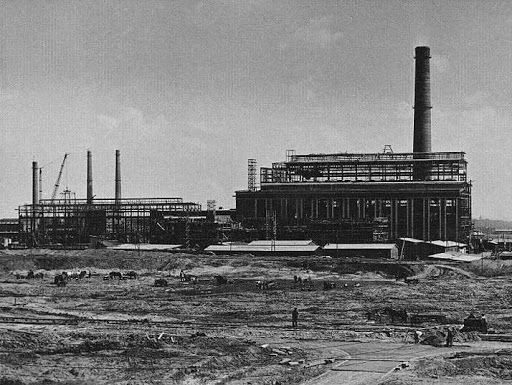
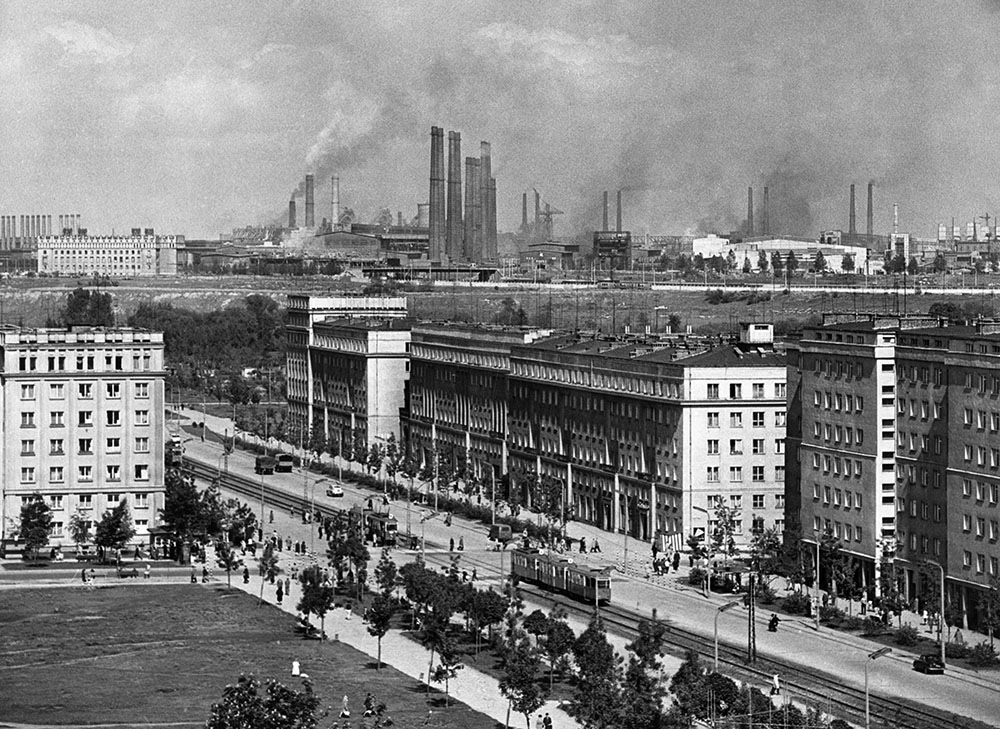
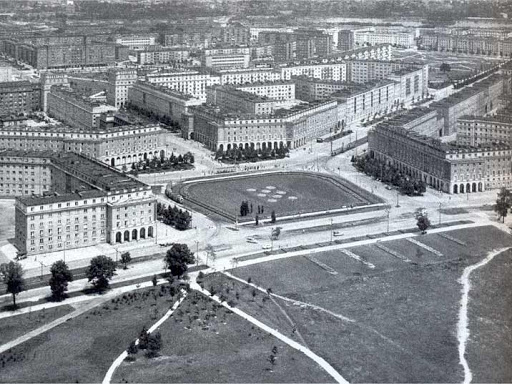
Residents life
The residents were mostly from rural parts of Poland and they flooded into the city; some were even Greeks and Macedonians who were fleeing the civil war. Recruiting parties were also sent out to find specialty workers. The biggest draw for people was the pay. Many of the poor villagers that moved there didn’t even know what to do with the amount of money they were being paid. The first people to live in the city were the ones constructing it and the steelworks and many of them brought their families with them. Before construction could begin the workers had to build housing for themselves. Many of the buildings had to be constructed quickly; this led to lesser materials being used. There was no plumbing in many of the buildings for a while Most of the windows of the apartments didn’t have tight seals and would leak and most of the elevators didn’t function. Most of the other things advertised like the theaters and other entertainment venues as well as the schools and hospitals were understaffed; this led to the teachers having to work two to three shifts a day and the students receiving a lesser education and many of them were treated poorly by the staff. The hospitals didn’t have a reputation for treating patients well either. The lack of a church led many citizens of Nowa Huta to be angry with the city leaders and it caused them to have to commute to churches outside of Nowa Huta. The large mix of cultures made it very hard for the organizers of the cities. Many people especially from the rural areas brought cows and pigs to the city with them and there are some stories of residents breeding pigs in the apartment bathrooms. Stores were also under stocked especially when it came to food the expensive things were usually available but the workers couldn’t afford it. The lack of items led to many residents stealing from one another and the expensive items people couldn’t afford also being stolen and usually sold at a lower price or traded.
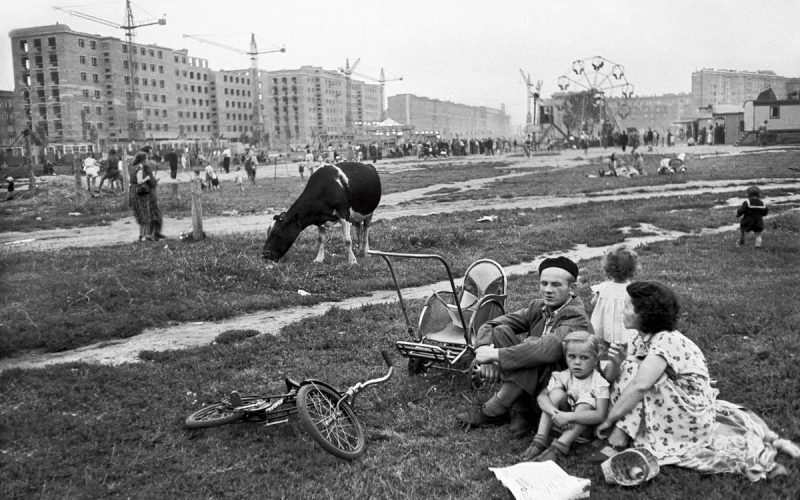
Problems
Besides being overpopulated and the poor rushed construction other problems quickly arose. The problems really began immediately. Work on the plant had to stop multiple times because of the lack of materials; this led to workers having to constantly work overtime in order to keep up with the plan. The work was very physically demanding due to there being very little heavy machinery. There were also the normal work hazards that went along with working at the plant. Alcoholism became a serious problem in the city and the violence that accompanied it led to a special unit being made that would publicize the names of people who committed crimes while intoxicated and anti-alcohol films being shown in schools. Corruption also played a big role especially when it came to the administration. They were the people who decided if someone was able to get an apartment or car and this led to many only dealing with people who could benefit them in some way. Many people who felt cheated by the system usually retaliated by vandalizing the property of administrators.
Conclusions
While the city and steelworks did do their job of employing people and kinda housing them and the country’s steel production increased greatly in the late 1940s and early 1950s Poland produced about 1,500 metric tons of steel and the year the plant opened Poland’s steel production increased to 2,600 metric tons. The quality of life really wasn’t great in the beginning. There was crime and corruption. The city was overpopulated, under supplied, and built poorly. The lack of staff for things like schools and hospitals made the staff there miserable and they treated students and patients poorly. Violence was another problem particularly bar fights and domestic abuse. The people of Nowa Huta had to work extremely hard for very little and everyone was pretty miserable.
